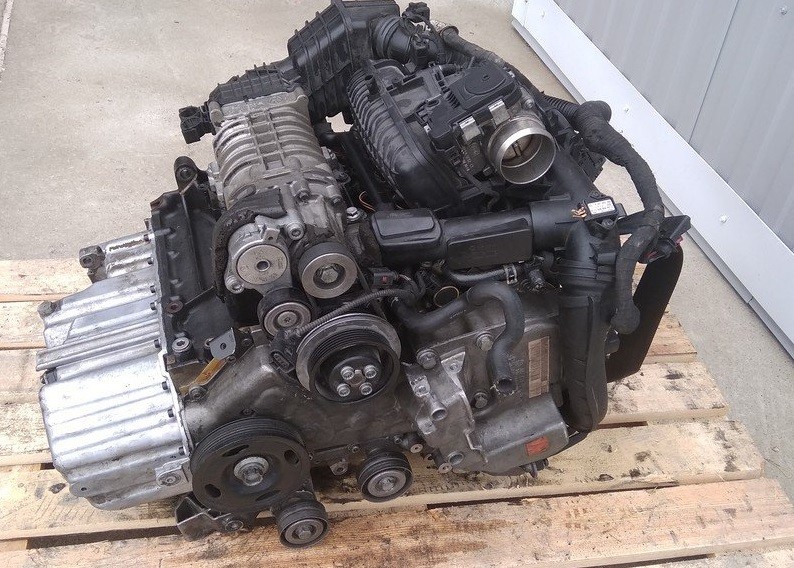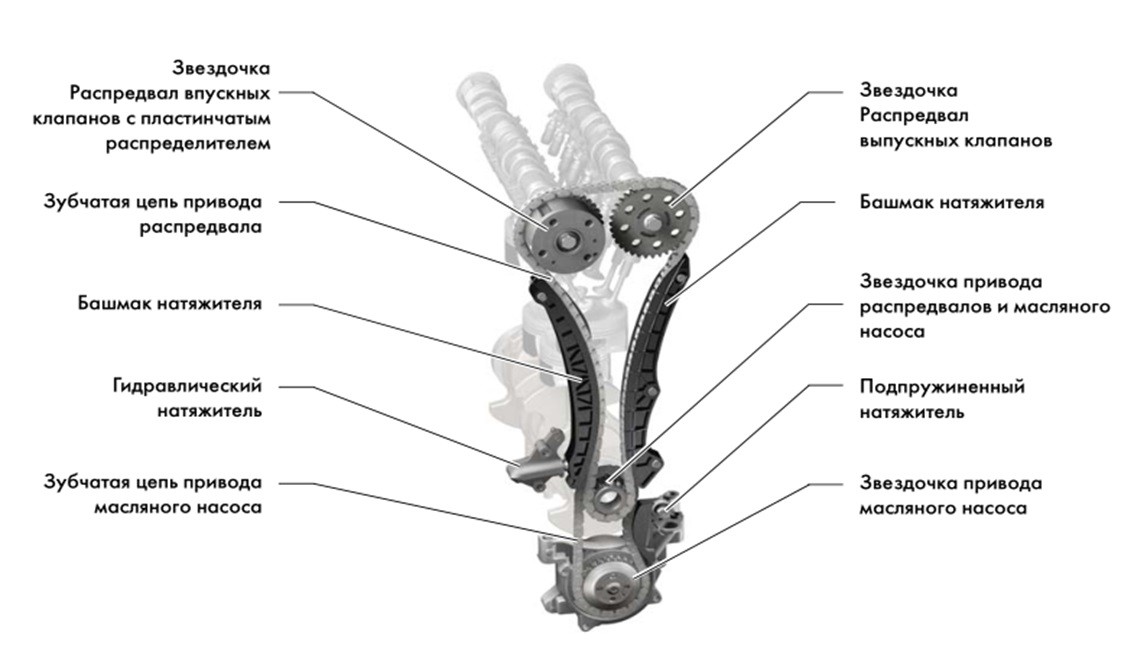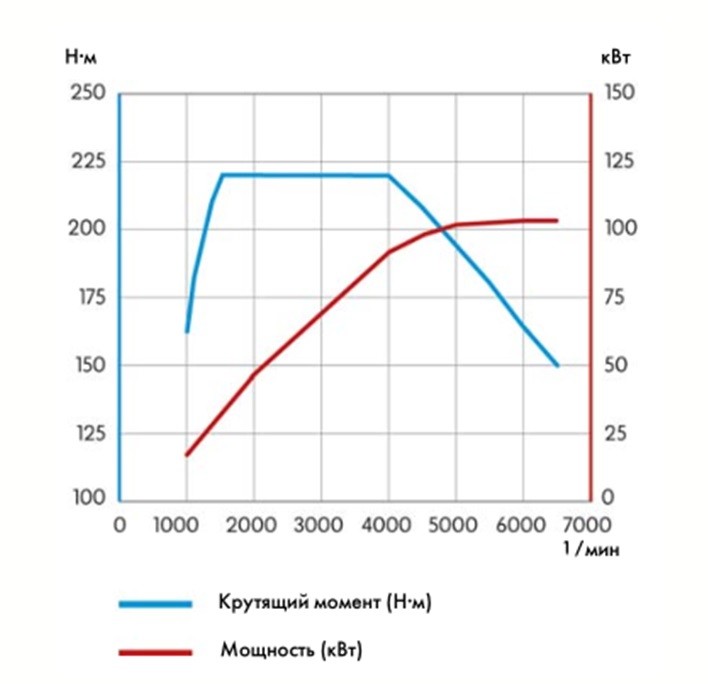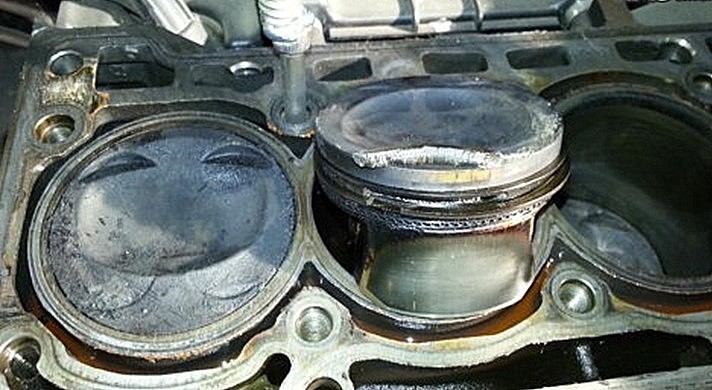
Volkswagen BMY engine
Content
Based on the AUA engine, VAG engineers developed the design of a new power unit, which is included in the line of turbocharged engines.
Description
For the first time, the general public was introduced to the VW BMY engine in 2005 at the Frankfurt Motor Show. He, like the entire family of 1,4 TSI EA111, replaced the two-liter FSI.
The main differences of this unit are in its execution. Firstly, he stands at the origins of a new generation of internal combustion engines that meet the downsizing program (English downsizing - “downsizing”). Secondly, BMY is structurally made according to the combined supercharging scheme. For this purpose, the KKK K03 turbine is used together with the EATON TVS compressor. Thirdly, a modular scheme is used in the arrangement of mounted units.
The unit was produced at the VAG plant from 2005 to 2010. During the release has undergone several improvements.
BMY is a 1,4-liter in-line four-cylinder turbocharged power unit with a capacity of 140 hp. with and a torque of 220 Nm.

Installed on Volkswagen cars:
The cylinder block is cast in gray cast iron. In the manufacture of sleeves used a special anti-friction alloy.
Lightweight pistons with three rings. Two upper compression, lower oil scraper. Floating fingers. From movement are fixed by lock rings.
Reinforced steel crankshaft, forged, has a conical shape.
Aluminum cylinder head. The inner part accommodates pressed-in seats with valve guides. The upper surface is designed to install a bed with two camshafts. A valve timing regulator (phase shifter) is mounted on the intake.

Valves (16 pcs.) with hydraulic compensators, so the need for manual adjustment of the thermal gap is not required.
The intake manifold is plastic, with an integrated charge air cooler. Liquid cooled intercooler.
Timing drive - single row chain.

Requires increased attention from the car owner (see chapter "Weaknesses").
Fuel supply system - injector, direct injection. The recommended AI-98 gasoline will work somewhat worse on AI-95.
Combined type lubrication system. Pressure controlled oil pump of the DuoCentric pressure controlled system. The drive is a chain. Original oil VAG Special G 5W-40 VW 502.00 / 505.00.
Turbocharging is carried out by a mechanical compressor and a turbine, which made it possible to get rid of the turbo lag effect.
The engine is controlled by the 17th generation Bosch Motronic ECU.
The engine has excellent external characteristics that satisfy the majority of car owners:

Technical specifications
| Manufacturer | Young Boleslav Plant |
| Release year | 2005 |
| Volume, cm³ | 1390 |
| The working volume of the combustion chamber, cm³ | 34.75 |
| Power, hp from | 140 |
| Power index, l. s / 1 liter volume | 101 |
| Torque, Nm | 220 |
| Compression ratio | 10 |
| Cylinder block | cast iron |
| Number of cylinders | 4 |
| Cylinder head | aluminum |
| Fuel injection order | 1-3-4-2 |
| Cylinder diameter, mm | 76.5 |
| The piston stroke, mm | 75.6 |
| Timing drive | chain |
| Number of valves per cylinder | 4 (DOHC) |
| Turbocharging | turbine KKK KOZ and Eaton TVS |
| Hydraulic compensators | Yes |
| Camshaft adjuster | yes (inlet) |
| Lubrication system capacity, l | 3.6 |
| Applied oil | 5W-40 |
| Oil consumption (calculated), l / 1000 km | Until 0,5 |
| Fuel system | injector, direct injection |
| Fuel | gasoline AI-98 |
| Environmental standards | Euro 4 |
| Resource, outside. km | 250 |
| Location | transverse |
| Tuning (potential), l. With | 210 |
Reliability, weaknesses, maintainability
Reliability
Despite the shortcomings, BMY entered the history of Volkswagen engine building as a reliable engine. This is evidenced by an impressive resource and margin of safety.
The manufacturer estimated the engine mileage at 250 thousand km. In reality, with timely maintenance and proper operation, this figure almost doubles.
Communicating on specialized forums, car owners often express their opinion about engines. So, badkolyamba from Moscow writes: “… golf, 1.4 TSI 140hp 2008, mileage 136 km. The engine runs perfectly." map fully agrees with this statement: “... with proper care and following the recommendations, a very good engine».
The manufacturer constantly monitors the reliability of the unit. For example, the timing drive parts were improved three times, the oil pump drive chain was replaced from a roller to a plate one.
The main drive chain was not left without attention. Its resource has been increased to 120-150 thousand kilometers of the car. The CPG was modernized - delicate oil scraper rings were replaced with more durable ones. In the ECM, the ECU has been finalized.
ICE has a high margin of safety. The motor can be boosted up to 250-300 hp. With. Immediately you need to make a reservation that such tuning has many negative consequences. The most important will be the reduction of the operational resource and the reduction of environmental standards for exhaust purification.
There is an outlet for especially hot heads - an elementary flashing of the ECU (Stage 1) will add about 60-70 hp to the engine. forces. In this case, the resource will not noticeably suffer, but some characteristics of the internal combustion engine will still change.
Weak spots
The engine has many Volkswagen weaknesses. The lion's share falls on the timing drive. Chain stretching can appear after 80-100 thousand kilometers. After that, it is the turn of wear of the drive sprockets. The danger of stretching is the occurrence of a jump, which ends with the bending of the valves when they meet the piston.

Often there is their destruction together with the cylinder head.
To minimize the possibility of timing problems, do not start the machine from a tow and leave it on an incline for a long time in gear.
The next weak point is the high demands of the engine on fuel quality. An attempt to save on gasoline leads to burnout of the pistons and the destruction of the cylinder walls. In addition, nozzles that clog with soot contribute to this.
Coolant leak. The cause must be sought in the intercooler radiator. The difficulty in timely detection of antifreeze leaks is that initially the liquid has time to evaporate. Only with the appearance of obvious traces of smudges, the process becomes more or less noticeable.
A lot of trouble for motorists is caused by tripping and vibration of the engine on a cold engine. We'll have to accept - this is the regular mode of operation of BMY. After warming up, the symptoms disappear.
In engines with high mileage, after 100-150 thousand km, piston rings may lie and an oil burner can be observed. The reason is age wear.
The rest of the malfunctions are not critical, since they do not occur on every internal combustion engine.
Maintainability
The cast-iron cylinder block allows for a complete overhaul of the unit. Recovery is made easier by the modular layout of attachment assemblies.
Modular design VW BMY
Motorists who perfectly know the structure of the engine and own the methodology for its restoration can carry out repair work on their own.
When choosing spare parts, priority is given to original ones. Analogues, especially used ones, are not suitable for repair for a number of reasons. The former have doubts about their quality, and used spare parts have an unknown residual resource.
Based on the high cost of parts and assemblies, it is recommended to consider the option of purchasing a contract engine. The price of such a motor varies widely - from 40 to 120 thousand rubles. There is no information on the total cost of a full-scale engine overhaul, but a similar restoration of such an aspirated engine costs 75 thousand rubles.
The Volkswagen BMY engine is reliable and durable, subject to all the manufacturer's recommendations for its operation. Until now, it is not inferior in popularity among the units of its class.

